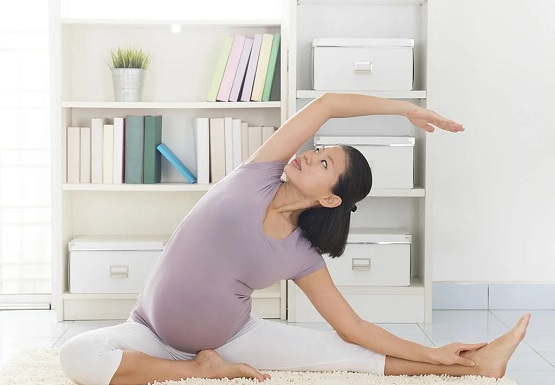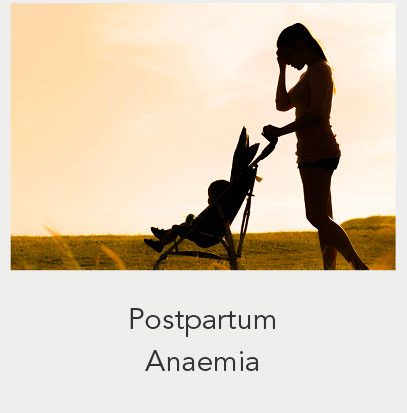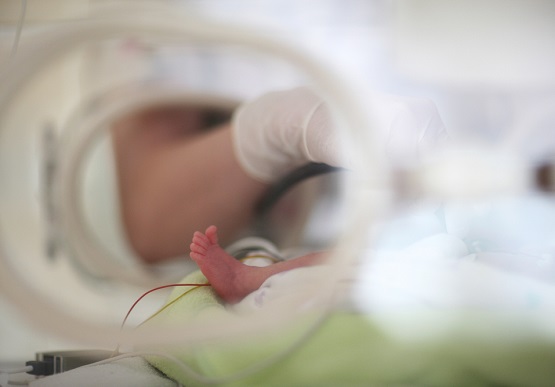The First Trimester

As an expectant mummy, especially if this is your first baby, you may be overwhelmed and confused by the many changes that your body goes through. However, understanding these changes can help you face each new day with a sense of wonder and anticipation. An obstetrician calculates pregnancy dates from the first day of the last menstrual period and assesses progress in terms of weeks. So let’s take a virtual tour of this 40-week journey and find out what goes on with you and your baby during this adventure.
THE FIRST TRIMESTER
WEEK 1
MUMMY: This is the start of the menstrual period and the womb lining renews itself by shedding.
WEEK 2
BABY: Of the thousands of follicles that have been lying dormant in mummy’s ovary, one little follicle carrying half of baby’s genetic material now responds to the hormonal changes, rapidly growing and maturing.
MUMMY: The womb lining regenerates and gets ‘plumped up’ in anticipation of the arrival of baby.
WEEK 3
BABY: The matured egg extrudes from the ovary in the process of ovulation. That fastest swimming sperm carrying the other half of genetic material from daddy finds this egg and fertilisation occurs. Baby is now a cell that is dividing in mummy’s fallopian tube while making its way towards the womb.
WEEK 4
BABY: The baby is now a clump of cells called the blastocyst that successfully finds a suitable spot in the womb and implants itself. The outer cells become the placenta and derive blood supply from mummy’s womb lining. The inner cells develop to become various parts of the baby.
MUMMY: Following successful conception, a large amount of progesterone is produced to support this pregnancy. You may start to feel different, experience some breast tenderness and engorgement. You may experience very light bleeding at this time, or the implantation bleed, which suggests menses, but the period does not come.
WEEK 5
BABY: The brain and the backbone begin to take shape. The external covering also changes, and the process of creating the placenta and the amniotic cavity (which will surround the placenta) begins.
MUMMY: You miss your period and start to feel unusually tired. The lower part of your tummy feels bloated. A home pregnancy test will announce the good news!
WEEK 6
BABY: The embryo now looks like a small ‘alien’! A primitive heart starts to pump, and there is colour! Little buds that will become the arms and legs appear this week. The site for the eyes and ears become evident. On average, the baby measures about 3mm from the rump to the tip of the head.
MUMMY: If you do not believe the positive results from several home pregnancy kits, a visit to the doctor will confirm the pregnancy via the ultrasound scan!
Hormones are rising rapidly, and you may start to experience some nausea.
WEEK 7
BABY: By the end of this week, the basis for your baby’s brain, blood and nervous systems are in place. Eyes, ears and mouth begin to form.
Tissues that will form the backbone and the abdominal muscles begin to develop.
The baby now measures 5mm to 7mm in crown to rump length.
MUMMY: Your doctor tells you the estimated date of delivery (EDD) and you can start planning for your baby’s arrival!
WEEK 8
BABY: The baby’s head takes shape and tiny dimples show the future location of the eyes and ears. Little rays on the limbs start to form and will become fingers and toes. The digestive system starts to develop. The tissue connecting the embryo to the uterus turns into an umbilical cord. Clusters of cells that will become the testes or ovaries appear. The crown to rump length is now 9mm to 14mm.
MUMMY: Your appetite is behaving strangely now. You may feel hungry but cannot seem to eat too much food. There may be unusual cravings for food you never thought you liked before. Some odours (like when your neighbour fries fish) are starting to bug you!
WEEK 9
BABY: Your baby now has reflexes and can move spontaneously. The thorax and abdomen are entirely formed. The lungs begin their development. The heart is now in the chest cavity and beats strongly.
The head is becoming more prominent. The eyes can be seen behind the closed membrane layer that will become the eyelids.
Fingers and toes are formed this week. Baby now measures 17mm to 22mm and weighs 2g.
MUMMY: Many of your relatives now know that you are pregnant, and everyone would offer advice! There are varied opinions… ‘no pineapples or cold drinks’, ‘no more coffee!’, ‘eat more fish – it is brain food for the baby!’ and the list goes on.
What are you to do? You already have difficulty with eating so many foods. It is essential that you take into consideration what your appetite allows you to eat. If there is no nausea or vomiting, you should start to focus on a good balanced diet. But if ‘healthy food’ only serves to induce vomiting, then it is not the time to be fussy about your nutrition. Remember that whatever you manage to hold down will be nutrition for your growing baby. The beneficial food for baby will not amount to much when it cannot be kept down!
WEEK 10
BABY: Your baby, which has been an embryo up until now, has become a foetus. Baby’s framework is made up of cartilage. This week, the first bone cells begin to replace this cartilage. The bones for arms and legs begin to harden, and joints begin to form. The face and jaw are also formed. All of the vital organs are in place: heart, lungs, brain, and intestines. However, they are all still immature and will develop further. The genitalia begin to form.
Your baby now measures 3cm and weighs 3g.
MUMMY: Seeing your baby on the ultrasound scan is an emotional experience! Baby is starting to look like a ‘little human’, and you can start to make out little hands and feet! This little one is going to be yours for life, and that just makes all the discomfort of early pregnancy worthwhile. A possible test for chromosomal abnormality, the Noninvasive Prenatal Testing (NIPT), can be done by a simple maternal blood test at this juncture. This test will aim to exclude Down syndrome, Edward’s syndrome, Patau syndrome and sex chromosome aneuploidy. You will also know in 10 working days if you are going to have a little boy or girl!
WEEK 11
BABY: Your baby will open his mouth for the first time. Salivary glands and vocal chords begin to form. The eyes are completely formed, but the membranes that will become the eyelids keep them covered still.
Hands and feet develop rapidly. The heart is beating strong at around 150 beats per minute.
Your baby now weighs about 10g.
MUMMY: The lower tummy feels increasingly full and bloated. Not being able to move your bowels daily makes it worse. Your sleep is disturbed by these discomforts and frequent leg cramps.
Your doctor tells you that this is the time when the rapidly growing womb is now filling up the pelvis and exerting pressure on the bladder and bowel. Lots of women at this time unwittingly drink less water because they keep feeling the urge to pee. Do note that dehydration is one of the most common reasons for leg cramps.
WEEK 12
BABY: The brain is developing fast, and your baby’s head is the biggest part of the body. All the organs, limbs and external genitalia are fully formed. Having completed organogenesis (formation of organs) also implies that baby is now less susceptible to external assaults like chemicals and drug exposure.
Your baby is now about 5cm from head to rump and 7.5cm if the expanding legs are taken into consideration.
MUMMY: Congratulations! You have reached the end of the first trimester and are definitely starting to feel less discomfort. You are less nervous as the doctor tells you that the pregnancy is now a lot more stable and the risk of miscarriage has significantly diminished.
A risk assessment for Down syndrome, called OSCAR, is usually performed at this time. Your doctor runs some blood tests and measures the baby’s neck (nuchal translucency) to assess this risk. If NIPT was performed at 10 weeks, this would be usually unnecessary.
Article is extracted from Mother & Child guidebook. For information on Obstetrics & Gynaecology
health care, treatment and services, please visit https://mtalvernia.sg/specialties/women-obstetrics-gynaecology/.
This article is taken from our My Alvernia Magazine Issue #38. Click here to read the issue on our website or on Magzter.



